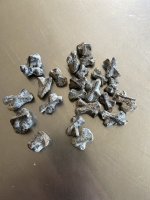bthomas71chevy
Jr. Member
- Apr 6, 2007
- 25
- 0
(The $7000 is a rough est as it could vary by $1000 one way or the other)
Should I buy $7000 in 40% and 90% Kennedys at $30 per oz?
(even though we are at $32-33)
(of the $7000 60 to 70 percent of the total is 40% silvers, while only 30 to 40 percent are 1964's)
How far should I go out of my way to buy in bulk at $30 oz?
Should I buy $7000 in 40% and 90% Kennedys at $30 per oz?
(even though we are at $32-33)
(of the $7000 60 to 70 percent of the total is 40% silvers, while only 30 to 40 percent are 1964's)
How far should I go out of my way to buy in bulk at $30 oz?



